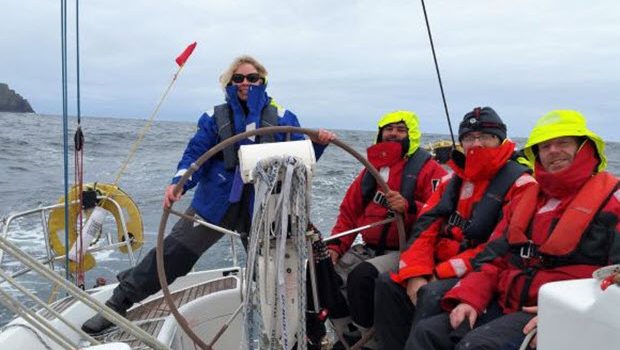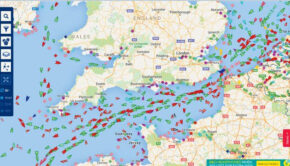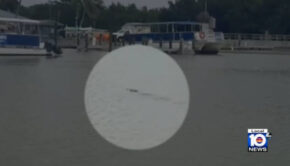What I Learned About Inflatable PFDs
Published on November 27th, 2018
by Glenn McCarthy, Lake Michigan Sail Racing Federation
I spent over a decade on the US Sailing Safety at Sea Committee. I marveled at the width and depth of knowledge of the members of this committee.
I was not directly involved in getting inflatable Personal Flotation Devices (PFDs) accepted by the U.S. Coast Guard. I was in the room when others who were directly involved reported on their progress. Other countries had already approved inflatables.
The U.S. was behind. At first the U.S. Coast Guard would hear nothing of it. A foam lifejacket was 100% guaranteed to work every time. Inflatables do have a known failure rate of inflation. And even then, user maintenance increases the failure rate. That was completely unacceptable to the U.S. Coast Guard.
The argument was made, “The foam PFDs sit in the bilge, in the lockers, many times still in their original wrapper, going unused and has a 0% chance of success of saving lives. They are hot on summer days to wear, where boating is a summer activity. Women don’t like them, as they are not making them attractive. And they are bulky, in the way, and uncomfortable. Whereas a fanny pack or horseshoe inflatable is something people will wear (data from approved countries) regularly and greatly improves usage and chance of success.”
When an Australian boat came to the U.S. they had to buy U.S. Coast Guard approved foam PFDs to be in compliance with U.S. laws. The all women’s Aussie sailboat came to Hawaii to race, bought U.S. Coast Guard approved foam PFDs, where they always wore their inflatables back home.
They put the U.S. Coast Guard approved foam PFDs down below on the floor keeping that weight low, and left their inflatables ashore to save weight. They had a problem, ran into an island, sank the boat, and at least one of them drowned. Proof people wear inflatables, not foam PFDs, which resulted in death.
The U.S. Coast Guard finally caved in and then established construction standards and approval process for inflatable PFDs.
An automatic inflatable has three ways to inflate: 1. Auto; 2. Pull tab; and 3. Blow tube. What this really means is inflatables should only go on people who are confident in the water. No non-swimmer should ever don any inflatable PFD in my opinion. And I think inflatables ought to have this warning label on them.
If your auto-inflate didn’t, would you pull the manual tab? If that didn’t work do you have the confidence in the water to find the inflation tube and blow up your inflatable PFD manually? If the answer to this is, “No,” do not ever wear an inflatable PFD and don a foam PFD instead.
Next, the US Sailing Safety at Sea Committee added to the Special Regulations (for the very few races in the U.S. that actually use them) that competitors had to wear a PFD at the start and finish and at all other times in between unless the skipper said they can be removed. That created a public fit storm (U.S Navy Captain, Retired, John Bonds, the Safety at Sea Committee Chair at that time, told me he got threatening letters).
I knew that Roy Disney was against what we had done, and when he got in my car I explained how we (the Safety at Sea Committee) failed to explain the reason why. Every PFD ties, zips, snaps differently from the next. By putting them on before the start, everyone has theirs fitted, if they can take them off, they know exactly where they are below deck, as they need them at the finish.
If it is blowing hard at the start of the race, most skippers won’t let the crew take them off. But if it is hot and light out, the skippers would let them take them off. It really is the Boy Scout adage – “Be prepared.” Roy gave a small smile and a nod. I don’t know if I converted him though.
Look around today, racers and non-racers are wearing inflatables regularly, in numbers that foam PFDs never saw. The death rate for sailboats is so low compared to all other types of watercraft, that the U.S. Coast Guard has been coming to US Sailing asking questions to learn how sailing, in general, is doing things right.
Since the finish of the 2018 Chicago to Mackinac race, I talked to one race inspector in the U.S. He performed his own special inspection. He looked at the auto-inflator mechanism on PFDs which have a green (good) and red (bad) indicator. He found 4 inflatable PFDs with red on the limited number of boats he inspected. This indicates some people are not maintaining their units, nor checking them.
None of this makes me feel any better about the loss of Mr. Santarelli (during the 2018 Chi-Mac). However, it does explain the evolution in all of sailing where PFD wearing inflatables has become accepted, in some places pushed and pushed hard. We are on the right path, and we carry on in an imperfect world.









 We’ll keep your information safe.
We’ll keep your information safe.